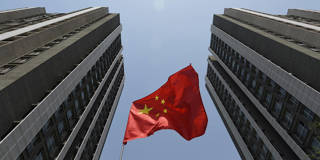Chinese outward investment is forecast to triple by 2020, to some $20 trillion, putting China behind only the US. But moving quickly to invest overseas – while appealing to many in China – will be highly risky, unless policymakers and companies alike learn from past failures.
BEIJING – Two Chinese initiatives – “One Belt, One Road” (OBOR) and “International Production Cooperation” – encapsulate President Xi Jinping’s views on overseas investment. Both slogans are supported by development approaches (the former in Eurasia, the latter globally) that signal China’s desire to forge a new model of globalization built on mutual cooperation.
Chinese enterprises are already taking these investment cues seriously. By 2020, China’s overseas assets are forecast to triple, to $20 trillion, from $6.4 trillion today. But moving quickly to invest in overseas projects, while appealing to many, carries great risks – and could mean high debt – if not managed properly. If Chinese companies, both state- and privately owned, are to benefit from the leadership’s new vision, they must learn from past failures, and adapt their priorities for the long term.
One key area where China is trying to refashion its outward investment strategy is in Latin America. In recent years, China has vigorously sought to recast its bilateral diplomatic and economic ties to the region. The publication in November 2016 of the second Sino-Latin American and Caribbean policy document (which followed Xi’s visit to Latin America the same month) has created a unique opportunity to deepen bilateral investment, by placing it in a more cooperative framework. Previous approaches, often backed by risky loans that in some cases turned bad, hurt Chinese investors.

BEIJING – Two Chinese initiatives – “One Belt, One Road” (OBOR) and “International Production Cooperation” – encapsulate President Xi Jinping’s views on overseas investment. Both slogans are supported by development approaches (the former in Eurasia, the latter globally) that signal China’s desire to forge a new model of globalization built on mutual cooperation.
Chinese enterprises are already taking these investment cues seriously. By 2020, China’s overseas assets are forecast to triple, to $20 trillion, from $6.4 trillion today. But moving quickly to invest in overseas projects, while appealing to many, carries great risks – and could mean high debt – if not managed properly. If Chinese companies, both state- and privately owned, are to benefit from the leadership’s new vision, they must learn from past failures, and adapt their priorities for the long term.
One key area where China is trying to refashion its outward investment strategy is in Latin America. In recent years, China has vigorously sought to recast its bilateral diplomatic and economic ties to the region. The publication in November 2016 of the second Sino-Latin American and Caribbean policy document (which followed Xi’s visit to Latin America the same month) has created a unique opportunity to deepen bilateral investment, by placing it in a more cooperative framework. Previous approaches, often backed by risky loans that in some cases turned bad, hurt Chinese investors.